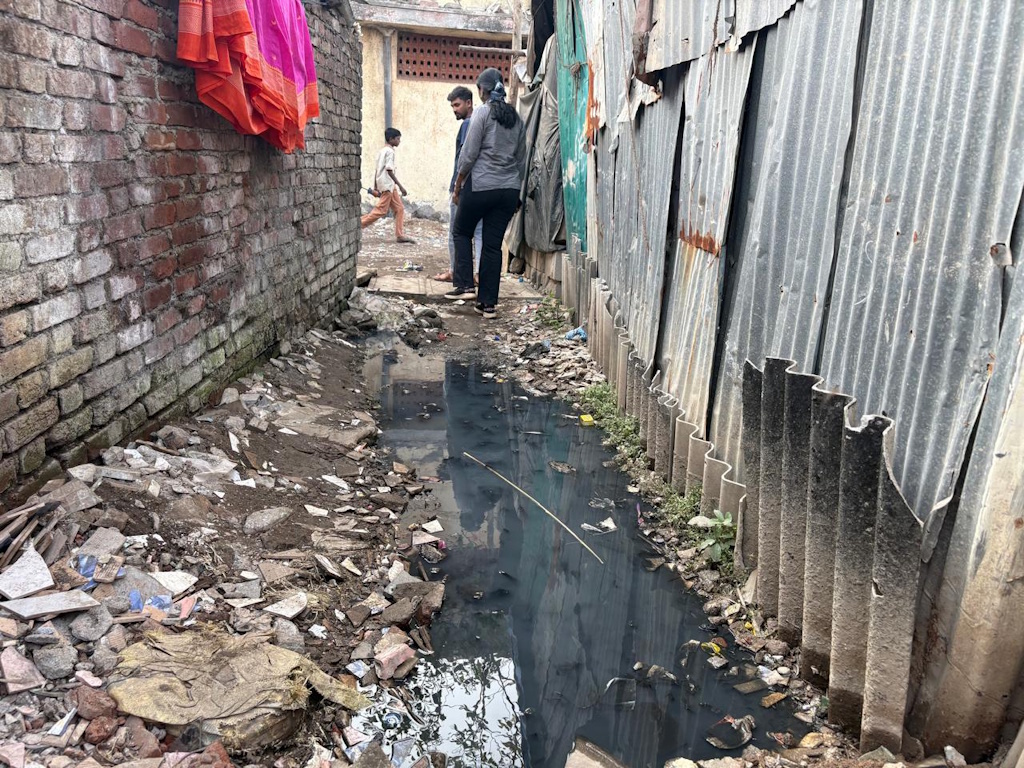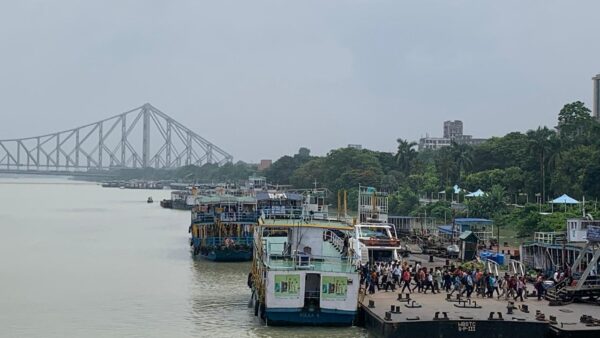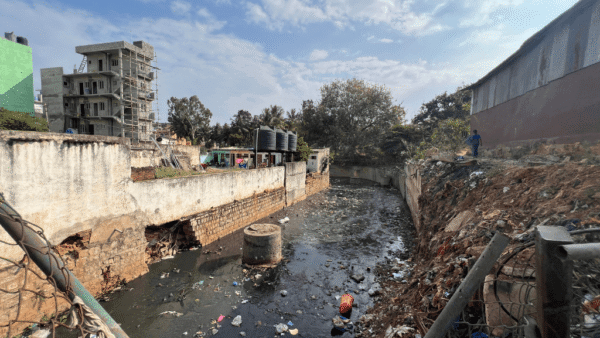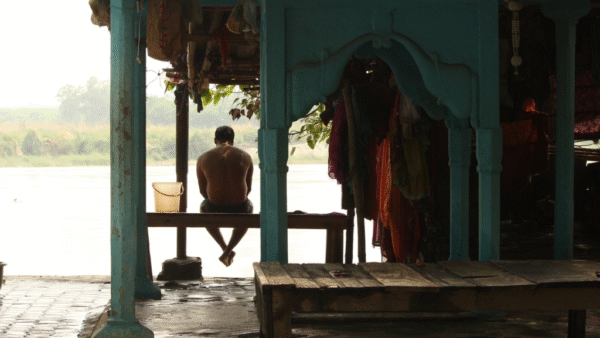Cities are significant contributors to climate change, accounting for 60-80 percent global energy consumption and 75 percent greenhouse gas emissions, as the United Nations reminded us in 2021. They are also deeply impacted by climate change, especially in the Global South, where the most marginalised bear the brunt of extreme weather events. In India, where 34 percent of the population is already urban and urban areas are projected to contribute 75 percent of the GDP by 2030, the stakes are high, with an estimated 400 million more people facing the escalating impacts of climate change by 2050 (Gogoi et al. 2023).
In response to the growing climate crisis, the last 20 years have seen a steady increase in institutions and mechanisms in the climate governance space in India. Tracing this history from 2007, as authors Dubash and Joseph concluded in 2016, the institutionalisation has been ad hoc, reactive to international trends, silo-ed and, barring a few examples, without adequate capacities and functionaries for rigorous analysis and participatory action (Dubash, N.K & Joseph, N.B). Since 2014, centralised strategy setting, accompanied by sectoral schemes and programmes, indicates a bias toward visibility and “harvesting ex-post climate narratives” (ibid.). One indicator of this “opportunism” across different government structures and functions, without fundamentally integrating climate as a priority or meaningful synergies across institutions and structures (Pillai V. & Dubash N. K., 2021), is seen in the Climate Action Plans (CAP) that cities draw up.
CAPs have attracted funds and institutional support. However, they are not rooted in existing planning laws or institutions. They are housed within municipal corporations, which offer some scope for integration but their exclusion from Development Plans of cities, mandated by the Regional and Town Planning Act, limits their potential for climate action. This prevents them from being fully embedded within urban spatial planning and decision-making processes, thereby diluting their influence. There is also an absence of accountability mechanisms and discursive spaces that can be claimed by civil society groups, including community-based non-profits. In contrast, a review of adaptation efforts across cities reveals that effective climate action happens through a cohesive approach that aligns institutional mandates with spatial planning frameworks (Singh C. et. al., 2021).
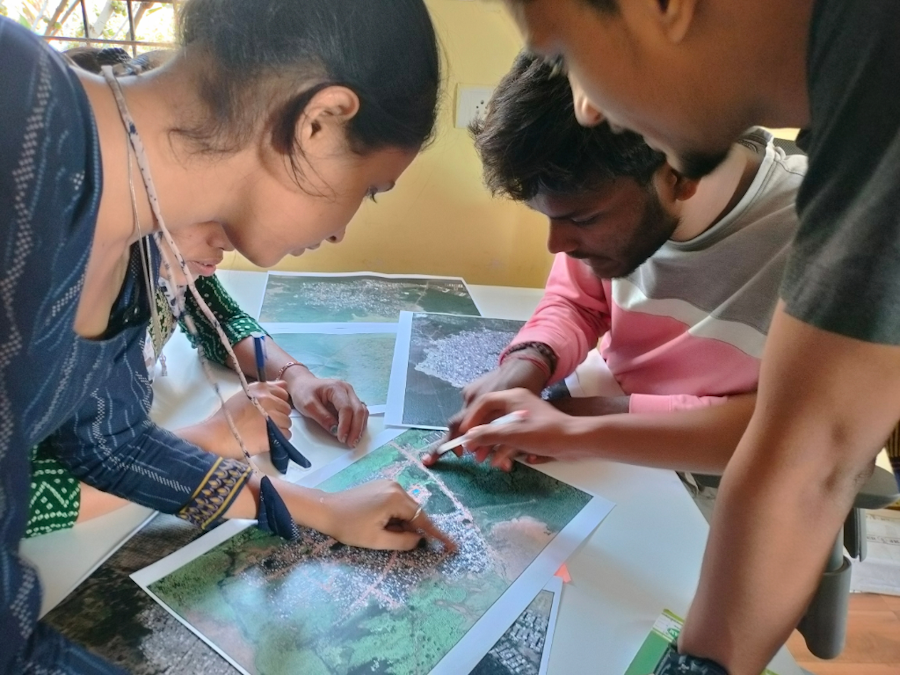
Photo: YUVA
Despite these challenges, civil society has been engaging with different models of climate governance. Primary among these are organisations adopting the “climate sustainability framework”, including stalwart think tanks and institutions, “targeted at the betterment of the environment, breakthroughs in climate science, and innovations in climate-friendly technology” (Swarnakar, 2019). The technocratic nature of climate decision making has not limited the growth – from 300 in 2015 to 612 in 2020 – and influence of these civil society groups in the last decade (Sirur, 2023). The reason, as Swarnakar argues, is that they are inherently apolitical, avoid confrontations, and strategically position themselves as technical experts and knowledge partners of different climate governance institutions. Newer organisations and social enterprises working towards climate ‘solutions’ are also growing at a fast pace. While think tanks contribute valuable expertise and shape policy, their dominance risks overshadowing local knowledge and community-led initiatives. We argue that although experts contribute important knowledge into democratic policy-making, their limited exposure to grassroots may exclude crucial voices, undermining the inclusivity necessary for effective climate action.
In contrast, civil society operating within the climate justice framework can claim limited impact as the questions they raise – of power, equity and participation of marginalised groups – are often critical of current trends in climate governance and policy making (Swarnakar, 2019). While a few experienced non-profits and networks occupy positions of influence at different institutional and global spaces, there is limited integration of climate issues with civil society groups working on issues of justice.
This results in a substantial gap in current climate policy and practice. The missing piece is often the community affected by both the impacts of climate change and the resulting policies. The absence of a justice lens in climate governance can be attributed to a lack of understanding and strategic focus amongst social justice-focused civil society on how climate intersects with development. When coupled with high entry barriers and threats of backlash for speaking up, participation by certain civil society groups and marginalised voices becomes challenging. This gap exists despite there being a globally growing case for including civil society contributions to improve climate policy and action.
Importantly, the principles of the Indian Constitution ensure that people must have means and mechanisms to participate in development, and that includes climate action. Given this context, YUVA underlines the critical need to ensure that the voices of marginalised communities, who are at the frontline of both climate change and policy impacts, are not sidelined in the discussions on climate solutions. Our work attempts to strengthen the linkages between social justice and climate resilience.
Claiming space for inclusive climate action
Our work shows that increased civil society engagement focused on climate justice when done in collaboration with other experts has a potential positive impact on climate action. Though cities like Mumbai, Bengaluru, Delhi, and Kolkata are implementing or drafting their CAPs, these plans have been critiqued for adopting a top-down approach that does not adequately address the unique needs of local contexts (G, D., Gupta, D., & Prakash, A., 2023).
A significant barrier to effective climate action is the lack of grassroots climate data and understanding essential for developing adaptation strategies tailored to specific areas. This issue is particularly pertinent in the Global South, where urban areas face complex challenges that cannot be addressed by macro-level mitigation strategies alone.
The Intergovernmental Panel on Climate Change (IPCC) emphasises the need of multi-layered and multi-sectoral approaches to address social inequities, tailor responses to climate risks, and integrate systems to enhance the feasibility and effectiveness of adaptation strategies (IPCC, 2022). Clearly, the need for climate action that is both inclusive and locally driven is critical. In response, the four-pronged Community Climate Action Planning framework, developed by YUVA, based on community work in Mumbai’s bastis and learnings from similar efforts globally, embodies a process of localised and participatory climate action.
Each step in our framework is designed to actively centre-stage the community both in action and decision-making. It is outlined below.
- Climate Hazard Mapping (CHM)
A crucial first step in identifying climate risks in a geography is Climate Hazard Mapping (CHM), which begins by mapping urban poor communities (bastis) that are often excluded from official records and planning processes. This lack of recognition hinders efforts to address their needs, including access to basic services, housing and public infrastructure. Therefore, mapping these communities, with a focus on overlaying climate hazards such as flooding, air quality, landslides, sea-level rise and land surface temperature, becomes key. This overlay leads to identification of ‘climate hotspots’ where multiple climate hazards overlap in one basti. In the Mumbai Metropolitan Region (MMR), our CHM identified 27 such climate hotspots (Goswami A. & Parmar D., 2024).
- Rapid Assessment (RA)
Once the climate hazard hotspots are identified, the next step involves a Rapid Assessment (RA) of these communities. This process moves beyond spatial data to gather ground-level insights about the basti in terms of exposure, sensitivity, and adaptive capacity. This involves capturing specific vulnerabilities of local populations, such as inadequate housing, poor infrastructure, and lack of disaster preparedness. YUVA’s RA across 27 hotspots in MMR helped identify climate exposure at a granular level and informed the selection of pilot site for more detailed vulnerability assessments. For instance, in the CHM and RA of Mumbai, Ambojwadi, an urban poor community located along the west coast, was identified for the pilot assessments due to heightened climate and social vulnerabilities experienced in the basti.
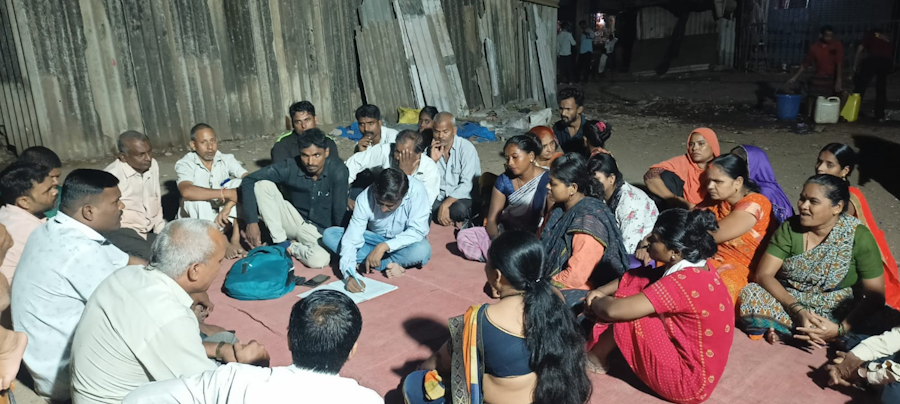
Photo: YUVA
- Vulnerability Assessment (VA)
This stage adopts a community-led approach that uses both qualitative (key informant interviews, focus group discussions) and quantitative methods (geo-tagging, surveys) to map the climate and social vulnerabilities faced by the community. By grounding the process in local knowledge and lived experiences, this stage becomes central to building ground-up databases on climate and social vulnerabilities in the basti. Initially this stage involves training and learning sessions on climate justice with community members (often women or youth groups). The community members actively shape the process by evaluating both data collection and analysis methods of the VA.
In Ambojwadi, the youth captured local vulnerabilities through the VA, the findings of which were disseminated in the community through awareness sessions in different clusters. This led to the initiation of the Community Climate Action Plan which consolidated the key findings of the VA and established connections between climate issues and social challenges within the community. By doing so, it aimed to generate localised demands and promote advocacy from bottom-up.
- Community Climate Action Plan (CCAP)
The fourth stage focuses on developing and actioning the Community Climate Action Plan (CCAP). The CCAP focuses on small-scale, community-level interventions that address specific vulnerabilities identified in the previous stage, across multiple themes and climate hazards. In Ambojwadi, flooding and extreme heat were identified as the most severe climate hazards, with their impacts across 10 habitat themes for instance stormwater management, waste management, open spaces and housing amongst others.
The youth involved in the VA data collection process took the lead in conducting awareness sessions based on the findings. These sessions were tailored for specific groups, such as women and children, connecting everyday challenges to climate change to enable dialogue and active input. Then a rigorous prioritisation process led to identification of immediate, short- and long-term areas of action required. Additionally, forming community-level coalitions emerged as a cornerstone of the CCAP, enabling collective agency and claim-making with local authorities.
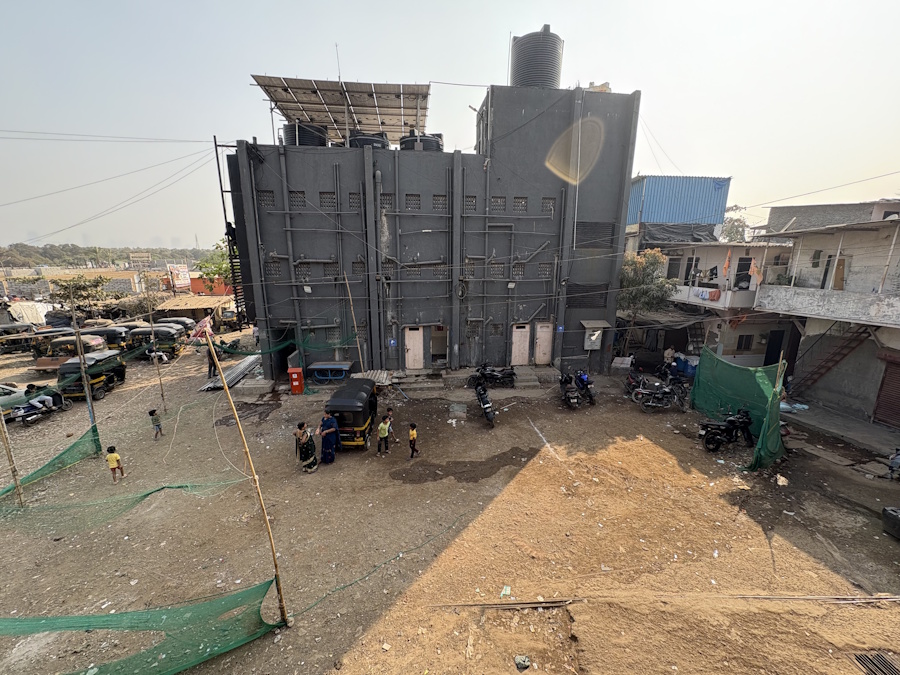
Photo: Jashvitha Dhagey
In Ambojwadi, the Sant Nirankari area was identified as an area requiring immediate action due to the high vulnerability to flooding. The CCAP prioritised Storm Water Drain (SWD) provision here, addressing both immediate needs and future risks. This, amongst other findings, was presented to the Additional Municipal Commissioner and officers from line departments. Long-standing advocacy resulted in funds being assigned for installation of SWD; it was later installed. Coalition-building and dialogue between local leaders, Mohalla Committee members, and key municipal officials helped.
Alongside this micro-adaptation, several other coping and key adaptation priorities are underway in different parts of the basti. Climate action in urban poor communities intersects sharply with social justice issues.
The CCAP centres locally driven solutions as prioritised by the community itself. Unlike mainstream climate adaptation solutions that often emphasise individual solutions or temporary fixes like clean-ups, the solutions emerging from the CCAP encompass holistic habitat upgradation and improvement of public infrastructure within the community. The outcomes attest to the rationale of scaling for institutionalised community climate action planning and adaptation measures in urban poor communities.
Conclusion
The climate change policy space must be anchored in social justice values and reshaped by the voices of communities. With this space increasingly occupied by experts and think-tanks, often accompanied by gatekeeping and exclusion of grassroots realities, it is crucial that communities reclaim and assert their voice in the climate discourse. This paper calls for civil society organisations working at the intersection of development and human rights to actively engage in shaping this movement. Environmental organisations, in turn, can expand their scope by embracing a broader climate justice framework that not only addresses mitigation but also adaptation and resilience in an equitable way.
For civil society organisations, identifying and navigating entry points in policy and practice will be vital for meaningful engagement. YUVA’s grassroots climate action framework demonstrates one way to make this integration possible – in this case, by linking habitat needs to climate adaptation solutions with people’s participation. Taking this vision ahead requires unwavering commitment for climate justice—from policymakers, civil society, and urban communities alike.
References
- Coalition For Urban Transitions (CUTS). (2019). Climate emergency urban opportunity. https://urbantransitions.global/wp-content/uploads/2019/09/Climate-Emergency-Urban-Opportunity-report.pdf
- Coalition For Urban Transitions (CUTS). (2021). Seizing India’s urban opportunity.
- Dubash, N.K & Joseph, N.B. (2016). Evolution of institutions for climate policy in India. Economic and Political Weekly, Vol. LI, No. 3, 44-54.
- G, D., Gupta, D., & Prakash, A. (2023). Barriers and opportunities in achieving climate and sustainable development goals in India: a multilevel analysis. Journal of Integrative Environmental Sciences, 20(1), 1–16.
- Gogoi, E., Cordeiro, R. & Vyas, D. (2023). Scoping study for a cities climate change programme. Oxford Policy Management and Shakti Sustainable Energy Foundation.
- Goswami A. & Parmar D. (2024). Youth-driven climate resilience and disaster preparedness: Grassroots lessons from Maharashtra. October, 2024, Volume 25. No.1 www.hudco.org ISSN 2347-4912
- IPCC. (2022). Summary for Policymakers [H.-O.Pörtner, D.C.Roberts, E.S.Poloczanska, K.Mintenbeck, M.Tignor, A. Alegría, M. Craig, S. Langsdorf, S. Löschke, V. Möller, A. Okem (eds.)]. In: Climate Change 2022: Impacts, Adaptation and Vulnerability. Contribution of Working Group II to the Sixth Assessment Report of the Intergovernmental Panel on Climate Change [H.-O.Pörtner, D.C.Roberts, M.Tignor, E.S.Poloczanska, K.Mintenbeck, A.Alegría, M.Craig, S. Langsdorf, S. Löschke, V. Möller, A. Okem, B. Rama (eds.)]. Cambridge University Press, Cambridge, UK and New York, NY, USA, pp. 3–33, doi:10.1017/9781009325844.001.
- Lindvall, D & Karlsson, M. (2023). Exploring the democracy-climate nexus: a review of correlations between democracy and climate policy performance. Climate Policy, 24:1, 87-103.
- Singh C., Madhavan M., Arvind J., Bazaz A. (2021). Climate change adaptation in Indian cities: A review of existing actions and spaces for triple wins. Urban Climate, Volume 36, 2021, 100783, ISSN 2212-0955.
- Sirur, S. (2023, June 16). CEEW to iFOREST, Modi govt listens when think tanks talk. They are growing in clout & cash.
- Swarnakar, P. (2019). Climate change, civil society, and social movement in India. In: India in a Warming World, Edited by: Navroz K. Dubash, Oxford University Press, 253-272.
- United Nations. (2021). UN Chief promotes “enormous” benefits of greener cities. [Online].
Roshni K Nuggehalli, Executive Director at Youth for Unity and Voluntary Action (YUVA), works on issues of youth and child rights, informal economy, climate justice and governance. She is a member of the Healing Solidarity Collective, an intersectional feminist space to collectively resource the development sector through healing and empowering practice. She has a Bachelor’s degree from Ohio Wesleyan University, USA, and a Master’s degree from Purdue University, USA, on human dimensions of natural resource management.
Dulari Parmar, Lead for Climate Justice at Youth for Unity and Voluntary Action (YUVA), works to advance climate-just cities by integrating grassroots efforts into spatial planning. She leads advocacy at city and state levels, with growing contributions to national and global platforms. Representing YUVA in the Urban Transformation Platform—a consortium of grassroots organizations from India, Bangladesh, and the Philippines— she seeks to amplify urban poor issues in global processes.
Cover photo: Jashvitha Dhagey

